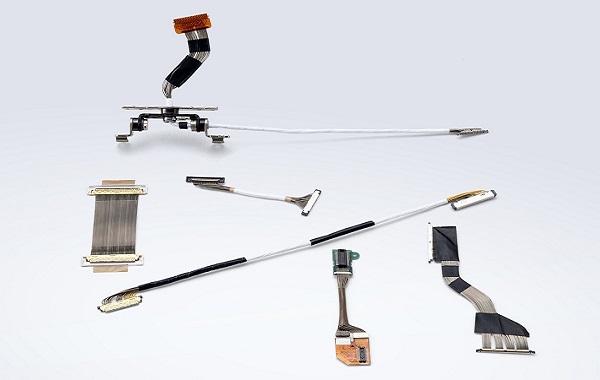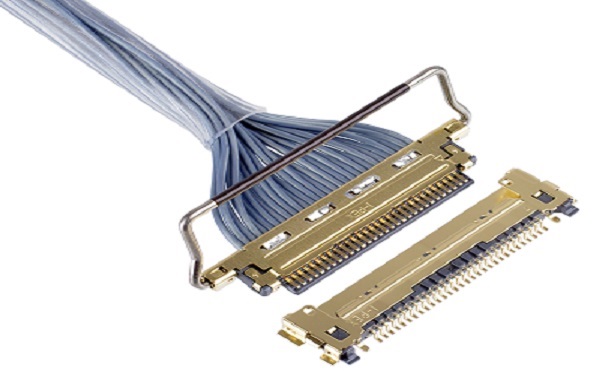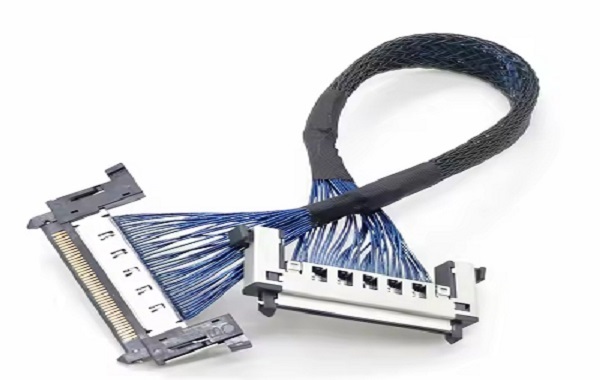Categorization:Harness Component

Structural and Design Differences
• The extremely thin coaxial cable束 consists of conductor, insulating layer, metal shielding layer, and outer sheath, with each coaxial cable individually shielded, offering excellent anti-interference performance. Its cable diameter is typically between 0.3mm and 0.5mm, capable of achieving high-density, high-speed point-to-point signal transmission, especially suitable for applications with strict requirements for EMI suppression and signal integrity.
• Extremely fine coaxial cable束 performs outstandingly in high-speed signal transmission, featuring excellent impedance control capability, which can effectively reduce crosstalk and signal attenuation, maintaining transmission integrity. It is widely used in high-speed interfaces such as MIPI, HDMI, USB4, PCIe, ensuring high-speed and stable signal transmission.
Flexible cables perform well in low and medium-speed signal transmission, but when the signal frequency rises to several GHz, due to the lack of independent shielding structures between conductors, crosstalk and attenuation are prone to occur, and the signal integrity consequently decreases. Therefore, in high-frequency applications, their performance is difficult to match that of coaxial structures.

Flexible cables are more commonly used for low-speed signal connections within equipment, such as keyboards, touch panels, LCD display modules, and so on. These applications have no high requirements for speed, but they have higher requirements for flexibility, ease of installation, and cost sensitivity, making flexible cables more economically viable.

The machining accuracy requirements for ultra-fine coaxial cable bundles are high, involving processes such as precision stripping, crimping, and welding, with high manufacturing difficulty, complex technology, and relatively high cost. However, its reliability and high-speed performance can meet the long-term stable needs of strict applications.
Flexible cables can be mass-produced through automated production, which is simple to process and cost-effective, making them suitable for internal connections in consumer electronic products. In situations where production costs need to be reduced, FPC/FFC is an ideal choice.
I amSuzhou Huichengyuan Electronic Technology, Long-term focus on the design and customization of high-speed cable harnesses and extremely thin coaxial cable harnesses, committed to providing stable and reliable high-speed interconnection solutions. If you have related needs or want to learn more, please contact:Manager Yin 18913280527 (WeChat same number)。